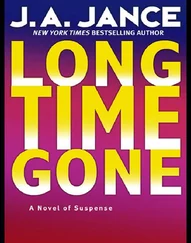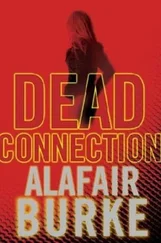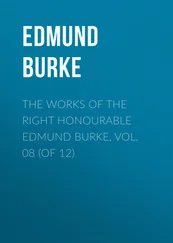Hank never wanted to be part of a wrongful conviction. He still woke up some nights thinking about Anthony James, and wondering what kind of life he might have had if things had been different. Hank liked to think that he had at least learned something from the experience. What he learned was that human memory was fragile. An expert in eyewitness testimony had explained to him why the nurse had erred in her identification: when Hank handed her a single piece of paper depicting the faces of six men, she had asked herself which of the six men looked the most like her attacker. Poor Anthony James looked more like Teddy Jackson than the others. From that day forward, the nurse simply continued to identify him-not because she remembered him from the attack, but because she remembered him as the man she had already picked out of the six-pack. The expert had shown him videotapes of subjects in her laboratory who, after choosing the wrong suspect in a lineup, would continue to identify that person even when given a choice between him and the actual perpetrator.
Hank prided himself on his ability to pull up images from his past as clearly as if he were examining a color photograph, but he realized that the clarity of an image and its accuracy were two different things.
When Willie Danes asked him about the woman he’d seen at Larson’s apartment, he had handed him two photographs: one of a redhead kissing Larson, and one Hank knew to be Alice Humphrey. Hank realized now that he had simply assumed that the same woman was in both photographs. And the two images looked enough like each other and enough like the woman at Larson’s apartment that he had made the ID. But if the identification process had been perfect-if Hank had not already seen photographs of Alice Humphrey on the Internet, and if Danes had shown Hank a series of photographs of red-haired women to examine sequentially-would he have picked out Alice Humphrey as the woman from Larson’s apartment? He could never be absolutely certain, but he found himself doubting his own memory.
And that’s why he kept searching for news updates. He wanted to know the police had more evidence pointing to Alice Humphrey’s involvement in Larson’s death. He wanted to be certain he had gotten it right when he’d made the ID.
For what had to be the fifteenth time in the last three days, he entered her name in Google Images. He was trying to be certain she was the same woman from the apartment complex, but he knew he’d seen so many pictures of her by now that he had simply cut and pasted her face on those remembered images that he kept replaying in his mind’s eye.
If only he could see her in person, watch her walk down Larson’s street in that bright blue coat and sexy shoes. Watch her arms barely move as she took the stairs. See the tilt of her head when she looked into a man’s face. Maybe if he were in the same room with her, he would know.
And then he realized he might be able to get a moving image of her, right here from his cubicle.
He opened YouTube on his computer and searched for Alice Humphrey. Nothing. Searched for Highline Gallery. Nothing. Then he searched for Frank Humphrey.
He found thousands of results. Many of them were illegally uploaded-iconic scenes from his copyrighted films. There were also reels from Inside Edition , Entertainment Tonight , and TMZ about the many mistresses who had stepped forward last year, one at a time in a slow, painful drip of tawdriness. There was the director’s exclusive sit-down interview with Katie Couric. Hank usually tried to block out celebrity gossip, but even he had been exposed to some of the ubiquitous sound bites: I understand other people with more traditional lifestyles may not understand; This is a private matter between Rose and me; None of this affects my work as an artist; I want to be evaluated based on my filmmaking . The interview was labeled a “trainwreck”-a patronizing non-apology from an arrogant old man.
Hank clicked through the videos, searching for images of Humphrey with his family, until he finally found a screen capture of Humphrey, hand in hand with his daughter. It was footage of him leaving the premiere of The Burn Wall , his last film before the scandal. By all accounts, it was a good movie, but a commercial flop due to the public’s lack of interest in the story of a soldier serving in Afghanistan.
Alice’s eyes darted around the glare of the flashbulbs while her father delivered the obligatory words of gratitude toward his actors and producers. As they left the red carpet, Alice looked down at her feet, delivering one awkward wave to the crowd before stepping into an awaiting limousine.
He rewound the reel, examining the woman’s face, trying to re-create the appearance of the woman he’d seen with Larson. Her hair was pulled into a low ponytail at the nape of her neck, but a woman’s hairstyle could change twenty times in two years. She appeared to be about the same height and weight. The woman with Larson had struck him as younger, but he had seen her from a distance, and those big sunglasses and bangs over her eyebrows would have covered the small lines on her forehead and around her eyes, the only betrayals of Alice Humphrey’s age.
He rewound the clip again, knowing that something about the video was bothering him.
It wasn’t her face. It was the walk. Just like Mrs. Ross gliding into the elevator, every person had a distinctive gait. When Alice Humphrey followed her father on the red carpet, she looked down at her feet, watching each placement of her feet onto the ground. Her shoes had heels, but they were three inches max-modest as far as those things went for women these days. The way she stepped-flat-footed, cautious, in tiny baby steps-reminded him of Ellen practicing in her first pair of Manolo Blahniks, or whatever those things were called.
This was not the walk of the woman outside Larson’s apartment. What had initially caught his attention had been that walk-that catlike prance up the street, eyes ahead, back straight, chest forward, nearly marching in those black stiletto pumps. It had been nearly two years since that film premiere. Maybe practice had made perfect for the once hesitant Miss Humphrey.
But maybe not.
He picked up the phone and asked for Detective Willie Danes.
“I hate to bother you, Detective, but I may have been a little too quick to call the ID on Alice Humphrey.” He explained the discrepancy between the woman he’d seen and the videotape of Humphrey on YouTube.
“You’re saying you saw Travis Larson with a knockout beauty of a redhead at his apartment, wearing a stunning peacock blue coat. And then his body gets found by, lo and behold, a knockout beauty of a redhead in the very same peacock blue coat, but it’s not the same woman? And you’re basing this on a pair of shoes the girl wore two years ago?”
“I’m not saying it’s a different woman. All I’m saying is I can’t be a hundred percent sure that it’s the same woman. Not based on what I saw.”
“Well, it’s a good thing the NYPD doesn’t operate on the same definition of a hundred percent as the FBI.”
It wasn’t the first time Hank had been ribbed by a local cop about the federal government having the luxury of demanding more evidence, and it wouldn’t be the last.
“Can you just be sure and check out Humphrey’s shoes? It’s not every woman out there who can pull off the monsters Larson’s girl was wearing.”
“Do I look like Prince Charming? Chasing down Cinderella with the glass slipper? Tell you what, Beckman: we don’t even need your ID at this point, so don’t worry your head about it, all right?”
“Well, you can’t have that much. I see you haven’t made an arrest yet.”
“I don’t know you, Beckman, so I don’t know how to say this to you, but your sister’s dead. You couldn’t save her, and the asshole you blamed for that is dead now, too. See a shrink or find something else to obsess about. I don’t really care, but your involvement in this case is over.”
Читать дальше
Конец ознакомительного отрывка
Купить книгу












